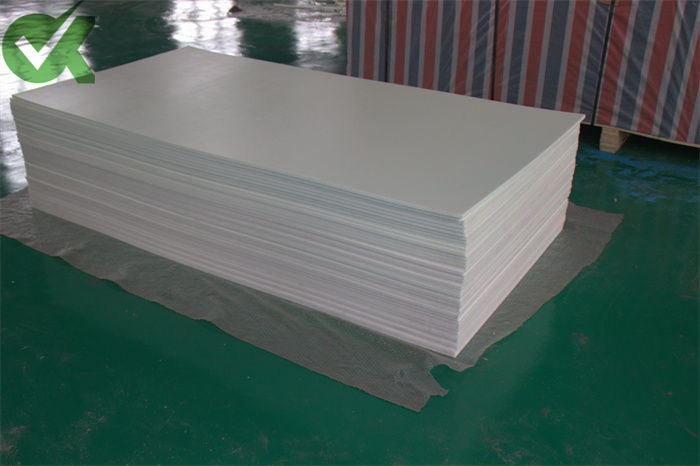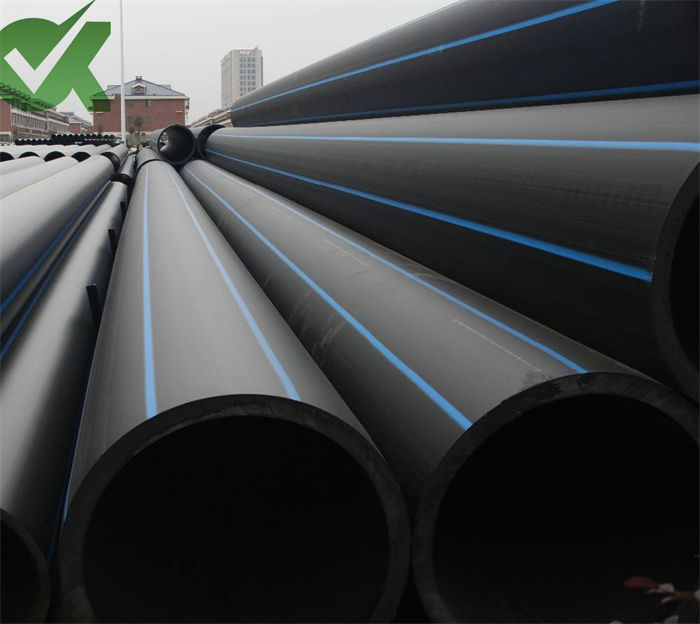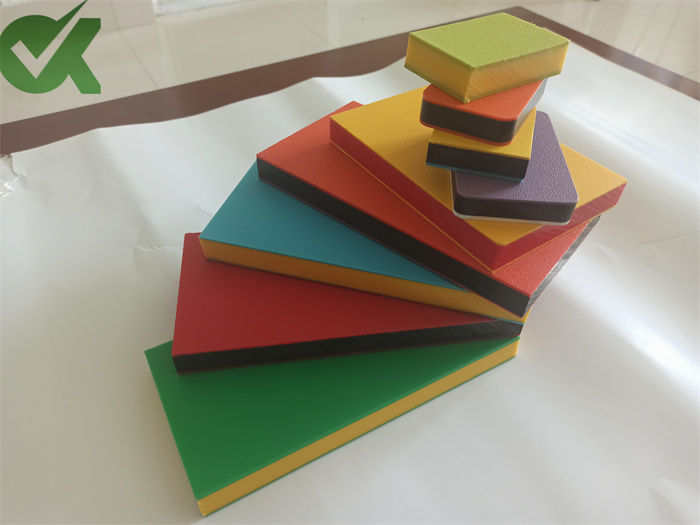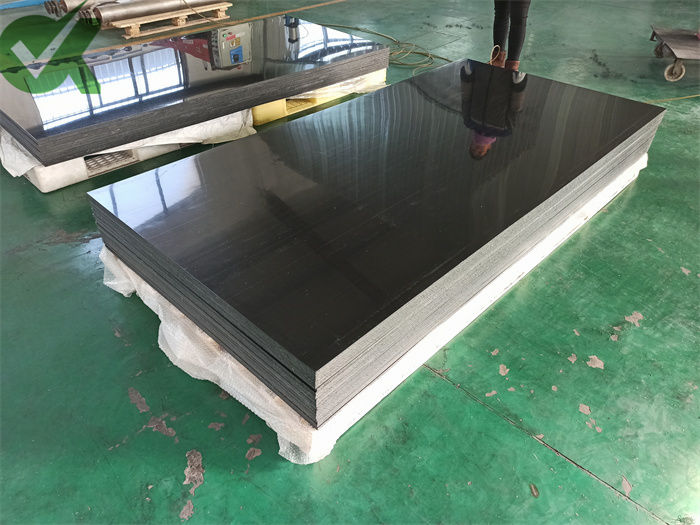

2022-07.12 Read:share:
High Density Polyethylene (HDPE) is a thermoplastic polymer made from petroleum. As one of the most versatile plastic materials around, HDPE plastic is used in a wide variety of applications, including plastic bottles, milk jugs, shampoo bottles, bleach bottles, cutting boards, and piping.
HDPE sheets come with a textured surface, also known as HDPE matte sheets. This type of sheet is designed to produce items such as cutting boards. Reliable and corrosion-resistant, HDPE Matte has FDA controls and National Sanitation Foundation (NSF) confirmation.
This sheet is best for food preparation because it won't dull your knife and won't grow bacteria.

Pipe Review HDPE plastic highlights enhanced weight and execution over standard HDPE sheet. Pipe Review HDPE's enhanced highlights make it the most popular HDPE sheet for open-air applications.

2 Color HDPE Sheet features a colored HDPE sheet core that allows manufacturers to create signs and letters that expose the interior color.
The colored HDPE sheet features same strength and durability as smooth and matte HDPE sheets does.

This type of HDPE sheet is best to use for those applications which need low friction and good abrasion resistance. It comprises of multiple features which make it versatile for many applications.
The most common example of smooth HDPE sheet application is tank linking as it is created effortlessly and includes great elasticity, compound protection, and effects safely.

This type of high density board is particularly suitable for use as ground protection mats or marine applications where non-slip and non-slip surfaces are required.
HDPE has many advantages, such as:
Weight: The high-density polyethylene sheets contain lightweight, and they're highly durable
Durability: The strong and reliable durability of HDPE is one of the critical advantages which has a big contribution to its popularity
Flexibility: HDPE can be easily transformed and molded into just about any shape or design
Resistance: Another striking advantage of HDPE sheets is, it features high chemical and impact resistance. And, it's also resistant against insects, rotting, mildew, and
Sustainability: HDPE sheets are recyclable, this is the reason that many recycled plastic products like trash cans and recycled plastic lumber contain HDPE
Weather ability: HDPE sheet is a weather resistant; in other words, it has weather ability due which it can stand some of the most extreme weather
Life-Span: Since HDPE consist of high chemical, weather, and impact resistance, hence it has a long lifespan, and it can also be outlasted as traditional material. Have you ever drop a kid’s plastic toy? You might have noticed the sturdiness of HDPE, as HDPE does not break, rather it ‘skips’ back.
Yes, HDPE is waterproof, impermeable and UV resistant. HDPE geomembrane, widely used in fish ponds, reservoirs, dam linings, landfills, oil and gas, mining, root barriers, etc.
| HDPE vs PP | |
| HDPE is high-density polyethylene. | PP is polypropylene. |
| Density | |
| HDPE has a very high density (0.941 g/cm3). | PP has a low density (0.905/gcm3). |
| Degree of Branching | |
| HDPE has a low degree of polymer chain branching. | PP has a high degree of polymer chain branching compared to HDPE. |
| Transparency | |
| The transparency of HDPE is low. | The transparency of PP is high. |
| Tacitiy | |
| Tacticity is absent in HDPE. | Tacticity is present in PP. |
| Temperature Tolerance | |
| HDPE cannot withstand autoclaving conditions. | PP can withstand autoclaving conditions. |
PVC is a durable vinyl polymer whereas HDPE is a polyethylene thermoplastic made from petroleum. Both pipes are strong through high temperatures. When comparing failure ratings when exposed to events like rain, stress, wind, heat or cold, HDPE is proven to be more durable.
Virgin HDPE is a safe plastic for food contact. The FDA has sanctioned recycled HDPE for food contact on a case-by-case basis for over 20 years. HDPE resin produces plastic that is corrosion-resistant and absorbs little moisture, making it well-suited for storing beverages. Also, HDPE containers don't leach chemicals into their contents.
Although HDPE pipe is often estimated to last 50 years, they are in fact more likely to have life expectancies of 100 years. PIPA (Plastics Industry Pipe Association) and the Plastic Pipe Institute (PPI) have written technical white papers on HDPE design life.
HDPE and LDPE are both a result of polymerization of polyethylene. This chemical process causes monomers to connect into long chains of hydrocarbons. As these chains form, strands branch off into other directions. The branching pattern determines the strength and density of the material.
More branching strands equals a more dense material, like HDPE.
Fewer strands equals a less dense polyethylene, or LDPE.
Other types of polyethylene, like MDPE and LLDPE, are similarly determined by the branching pattern that results from polymerization.
Put simply, HDPE and LDPE differ in density, which makes HDPE more suitable for applications where strength is most important, but LDPE more valuable for applications that need flexibility.
This depends on the size of the HDPE sheet including length, width, height and corresponding color, and then a reasonable quotation can be made. I suggest you to consult our professionals. +86 18903729871
High-density polyethylene (HDPE) is a general-purpose food-grade plastic approved by the FDA and USDA. HDPE cut resistant, creamy white. As with most thermoplastics, the heat generated during cutting causes the plastic to melt and fuse together behind the cutting blade. Using the correct cutting tool and lubricating the cutting area will ensure success when cutting HDPE plastic.
The advantage of HDPE sheet is that it can be cut with tools that many people already have. If you treat it like wood, you will cut and drill successfully. The best results for a circular saw or panel saw are carbide teeth. Standard routers and jigsaw blades can also cut curved or other geometric profiles. Tool blades need to be sharp for best results
Ideally, the teeth of the blade should be evenly distributed, of uniform height and shape, and located close to each other. Too much pitch can cause the plastic to chip or crack.
Note:Excessive heat from the blade while cutting may melt the plastic, as a precaution, pause between cuts to allow the blade to cool.
If you want to make curved or round plastic cuts, whether using thin or thick sheets, jigsaws are the best choice. Ideally, you'll use a sharp blade designed for plastic. A blade labeled wood can also be used, but the friction of the blade will generate too much heat, causing the plastic to melt after cutting. To avoid this, you may want to try different puzzle settings and speeds with a piece of scrap plastic. Use the jigsaw puzzle according to the manufacturer's instructions and you'll get a perfectly cut piece of plastic for your next home repair or DIY project.
The color of HDPE sheet is opaque, we have popular standard colors, such as black & white hdpe sheets, but we are not limited to any color, we can customize any color of HDPE sheet according to the color card.
HDPE plastic is resistant to strong acids and bases, reducing agents, and gentle oxidants, which makes it ideal for helping to create cleaner public spaces and more durable infrastructures. For example, public bathroom stalls can be cut from a single piece of extruded HDPE, which naturally combats corrosion, and will not discolor in high moisture environments. The textured surface of HDPE is also resistant to scratches, dents, graffiti, and is easy to clean.
Natural HDPE is not UV resistant and will deteriorate if exposed to prolonged exposure (1 year or more). UV absorbing materials can be added during the manufacturing process. Depending on the percentage of UV absorbing additives added, HDPE will resist UV exposure longer. Black HDPE with carbon black additives can be used for more than 50 years under direct UV exposure.
Virgin, or non-recycled, HDPE is food safe. Recycled HDPE products are reviewed by the FDA on a case-by-case basis. Virgin HDPE is great for making food safe plastic containers since it resists corrosion, doesn't absorb much moisture and doesn't leach chemicals.
Most common household plastic used in cutting boards, cereal box liners, juice containers and milk jugs.
HDPE products are used in many market settings including hotels and resorts, colleges and universities, food service, retail, golf courses, municipal parks and public spaces.
HDPE is also commonly used in the manufacture of toys, food storage containers, seafood, drains, food preparation products and outdoor signage.
When HDPE is recycled, it comes in both profile and sheet forms, allowing for many popular outdoor products such as waste and recycling containers, decks, bike racks, benches, picnic tables, fencing and furniture.